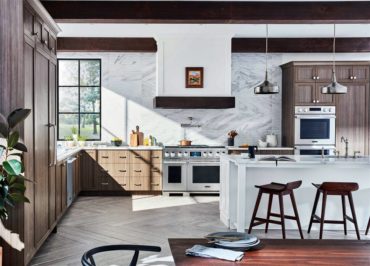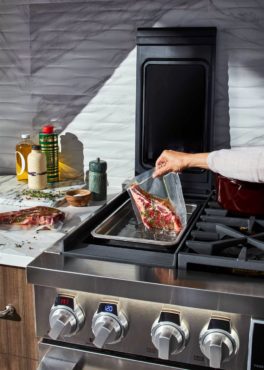 Today’s chefs and home cooks alike are seeking more meaningful food experiences, with smart, intuitive technology that’s high-performing and saves time. This year, leading brands are changing the way culinary enthusiasts source and prepare their food, emphasizing a heightened level of respect for all ingredients throughout the process.
Today’s chefs and home cooks alike are seeking more meaningful food experiences, with smart, intuitive technology that’s high-performing and saves time. This year, leading brands are changing the way culinary enthusiasts source and prepare their food, emphasizing a heightened level of respect for all ingredients throughout the process.
The result? Delicious food and healthier lifestyles.
Here are four trends driving the evolution of home cooking in 2019:
Farm fresh, locally sourced food
Home cooks strive to use fresh, locally grown or raised organic products, both in the interests of sustainability and to achieve the best tasting, most nutritious dishes. While some at-home chefs grow their own produce, others turn to sources like farmers markets and community-supported agriculture for the freshest ingredients in an effort to consume less processed food.
Luxury kitchen appliance brands are starting to recognize this and educate consumers on how to stay “true to food.” For instance, Signature Kitchen Suite is producing short films that highlight food experts around the country who can help guide others to get the best out of everything we cook.
Food journalist, author, educator and True to Food film host Mark Bittman says, “Cooking with consciousness is a lifestyle philosophy I live by. It gets people thinking about the food they’re consuming, where it’s sourced and how it’s prepared. That’s why I believe so strongly in the True to Food mission.”
Creativity, efficiency and sustainability are keys to today’s kitchen, according to Bittman, who recently led a panel discussion of culinary and wine experts to amplify the True to Food conversation at the new Signature Kitchen Suite “Experience and Design Center” in the heart of culinary-centric Napa Valley, California.
 Waste reduction
Waste reduction
Along with a growing interest in food sourcing comes the need to properly store and preserve it, not only to maintain freshness, but also to reduce waste. Important tips like decluttering your refrigerator and freezer, and making sure food is stored in the correct place are good first steps, but what about the quality of your appliances?
Many new built-in appliances like integrated column refrigerators and freezers are purposefully designed, from their spacious capacity to their ability to preserve fresh food through optimum temperature control, thanks to innovative features like a linear compressor and engineered all-metal interior.
Smart technology and modalities
Many of today’s home cooks represent a new generation of forward-thinking individuals called “technicureans,” or those who have a passion for food and appreciation for innovation. Imagine preheating your oven remotely or having the opportunity to use a go-to cooking method used in the world’s best restaurants.
Take, for instance, the new 48-inch Dual-Fuel Pro Range, which is the first on the market with built-in “sous vide,” directly on the cooktop, along with induction and gas, delivering the ultimate in precision cooking.
“Sous-vide is a revolutionary professional cooking technique that is now making its way to the home kitchen,” said AJ Schaller, executive chef at Cuisine Solutions and the Culinary Research and Education Academy.
“Sous-vide allows food to cook at a precise temperature to enhance flavors and maintain moisture, consistency and nutrients that are typically lost through conventional cooking methods,” she explains. “It requires more planning for the home chef, because you increase the time you cook when using lower temperatures, but it makes life easier since it’s such a simple process that when done well can increase conservation.”
Food and wine pairings
Interest in wine culture is always evolving, and many at-home chefs have an affinity for curating their collections. Investing in proper storage is also key, especially for wines that are best served chilled.
New integrated wine column refrigerators are bringing unique “wine cave” technology to wine connoisseurs. This technology significantly reduces vibration — a primary impediment to wine preservation that can cause chemical imbalances affecting the quality, flavors, aromas and texture. It also minimizes temperature fluctuations, limits light exposure and locks in humidity so aspiring sommeliers will have their sparkling wines, whites and rosés at the ready.





















Comments